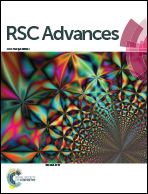A comparative investigation of different chemical treatments on SiO anode materials for lithium-ion batteries: towards long-term stability†
Abstract
In this work, we conduct a comparative study of boron-doped SiO (HB-SiO) and carbon-coated SiO (HC-SiO) to find an effective means of improving the electrochemical performances of SiO anode materials during long-cycle tests. Carbon-coating processes are widely introduced to provide electrical pathways for charge transfer, resulting in a decrease of the internal resistance. However, capacity fading is inevitably caused by the electrical loss between the SiO anode materials and the carbon-coating upon cycling. On the other hand, even when the HB-SiO electrodes are pulverized, the remaining materials are electrochemically active owing to the presence of Li ion pathways inside the active materials created by dopant diffusion. Electrochemical impedance spectroscopy and microstructural analysis confirm that the excellent electrochemical performance of the HB-SiO electrode originates from the Li kinetic enhancement in the SiO electrodes, enhancing the reversibility of the redox reaction compared to a HC-SiO electrode during the lithiation/delithiation process. Therefore, we conclude that impurity doping of alloy-type anode materials would be a better way to ensure that the electrochemical activity remains superior to carbon-coating in terms of long-term stability.



 Please wait while we load your content...
Please wait while we load your content...